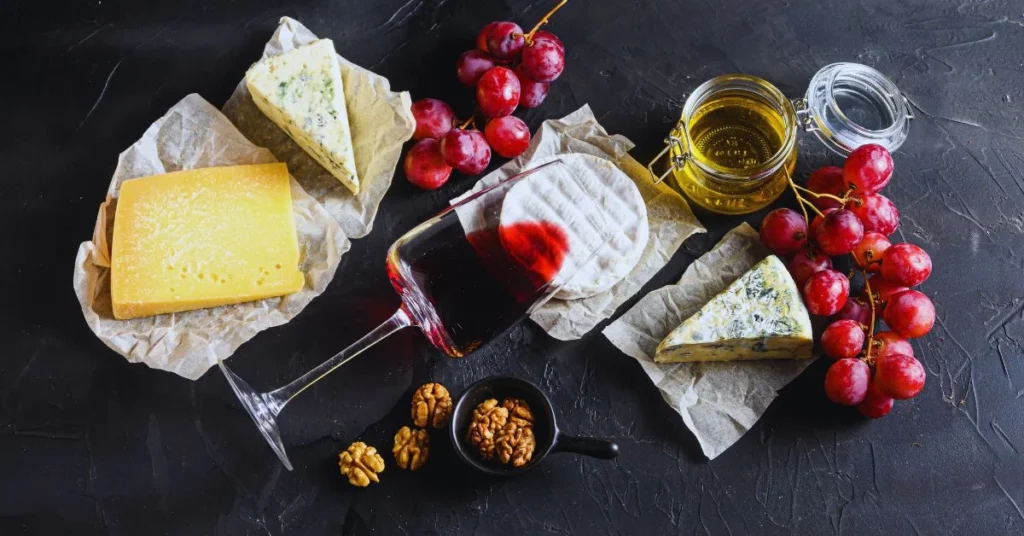Suppose you’re looking for a unique cheese that can elevate your culinary creations; look no further than Poval cheese. Known for its rich, earthy flavor and creamy texture, this cheese offers a delightful experience that stands out from more common varieties. Whether you’re a cheese connoisseur or want to try something new, this artisanal cheese brings depth and sophistication to any dish or cheese board.
This article will explore what makes this cheese special, how it’s made, and why it’s the perfect addition to your next meal. Discover everything you need to know about this gourmet delight, from its origins to serving suggestions.
What Makes This Cheese Unique?
This artisanal cheese is celebrated for its distinct flavor profile, striking a balance between creamy and nutty. The careful production process that includes traditional aging methods makes it truly stand out. The way this cheese is matured helps it develop complex flavors over time, giving it earthy undertones that make it especially appealing.
Unlike mass-produced varieties, this cheese is made by skilled artisans who follow long-established techniques, ensuring that each batch is carefully crafted. This attention to detail, combined with high-quality ingredients, results in a product that delights both in flavor and texture.
Whether enjoyed with wine, as part of a cheese board, or in your favorite recipes, this unique offering brings a rich, gourmet touch to any meal.
The History Behind This Gourmet Delight
This cheese has its roots in the mountainous regions of Central and Eastern Europe, especially in Slovenia. It was originally made by local farmers who sought ways to preserve excess milk. Families created this cheese by hand using basic ingredients like milk, salt, and natural cultures, often passing down recipes through generations.
Over time, the popularity of this cheese spread beyond its rural origins, becoming a staple in regional markets and later gaining recognition internationally. Today, it continues to be made using many of the same traditional techniques refined over centuries.
Its journey from humble beginnings to gourmet fame is a testament to its exceptional quality and flavor.
How This Artisan Cheese Is Made
The production process of this cheese is an art form that requires patience and skill. Here’s how it’s done:
Selecting the Milk
The process starts with premium cow’s milk, typically sourced from local farms. This milk is often unpasteurized, which allows for preserving natural enzymes that contribute to the cheese’s complex flavors.
Curd Formation
Next, the milk is gently heated and combined with rennet to begin curdling. Once curds form, they are cut into small pieces to release moisture. This step must be carefully timed to achieve the perfect balance of texture.
Pressing and Shaping
The curds are placed into molds, which are pressed to remove excess whey and shape the cheese into its final form. This results in a semi-hard texture that defines this cheese.
Salting and Aging
Once shaped, the cheese is salted to enhance flavor and help with preservation. The cheese is then aged in natural conditions—often hay—giving it its signature earthy flavor and aroma. The aging period can range from several weeks to a few months, depending on the desired flavor intensity.
The Flavor Profile You Can Expect
This cheese is known for its nuanced, well-rounded taste. Some key flavor characteristics include:
- Earthy Undertones: Thanks to the aging process, the cheese develops a natural, earthy flavor reminiscent of the landscapes where it was originally produced.
- Nutty Accents: Nutty notes emerge as they mature, adding complexity layers to their taste.
- Creamy Texture: Although semi-hard, the cheese has a rich creaminess that enhances its mouthfeel, making it enjoyable on its own or as part of a dish.
These characteristics make it a favorite among cheese lovers who appreciate the depth and subtlety in its flavors.
Serving and Pairing Suggestions
This cheese offers incredible versatility in both simple and gourmet presentations. Here are some ideas on how to serve and pair it:
Cheese Boards
This option pairs wonderfully with fresh fruits like figs, pears, or apples when served on a cheese board. Walnuts or almonds perfectly complement their nutty flavor, and a drizzle of honey can enhance the overall experience.
Bread and Crackers
For a classic presentation, serve it with crusty bread or artisanal crackers. The contrast between the creamy cheese and the crunchy bread makes for a delightful bite.
Wine Pairings
This cheese pairs beautifully with both white and red wines. A crisp Sauvignon Blanc or a light Chardonnay enhances its complexity, while a Pinot Noir brings out its earthy undertones.
Culinary Applications
This cheese is equally at home in the kitchen. Use it to top baked dishes like gratins, melt it over pasta, or shave it over salads for added richness. Its smooth melting properties make it ideal for stuffed vegetables or hearty casseroles.
Where to Find This Specialty Cheese
While this cheese may not always be easy to find, it’s definitely worth the search. Here’s where you might discover it:
- Specialty Cheese Shops: Local cheese retailers often carry unique offerings like this one, so check out nearby shops.
- Farmers’ Markets: You may find small-batch varieties at farmers’ markets, where local artisans often showcase homemade cheeses.
- Gourmet Grocery Stores: High-end grocery stores with fine cheese sections are another good option. Ask the staff about their selection.
- Online Retailers: If you can’t find it locally, many online retailers now offer home delivery for artisanal cheeses, making it easier to enjoy this delight no matter where you are.
Customer Reviews and Feedback
People who have tried this cheese often share their glowing reviews. Many describe it as a “hidden treasure” that adds a special touch to any cheese board or dish. One fan noted, “This cheese has completely changed how I approach entertaining—it’s always a hit with guests.”
Social media posts frequently highlight the cheese in beautifully curated cheese boards or gourmet recipes, with users praising its texture and flavor complexity. This cheese impresses whether served as a standalone snack or incorporated into recipes.
Creative Ways to Use This Cheese for Entertaining
If you’re planning a party or gathering, this cheese can take your spread to the next level. Here are some creative ways to include it in your menu:
- Charcuterie Boards: Make this cheese the star of a stunning charcuterie board. Surround it with cured meats, olives, and seasonal fruits for an eye-catching presentation.
- Stuffed Dishes: Melt it inside stuffed mushrooms or peppers for an appetizer that is as flavorful as elegant.
- Pasta and Gratin Dishes: Use it to create a creamy sauce for pasta, or grate it over a baked gratin to add a layer of rich, cheesy goodness.
- Cheese for Dessert: Pair it with honey and nuts to create a sophisticated yet simple dessert option that impresses your guests.
Conclusion
This exceptional cheese offers a unique combination of flavor, texture, and tradition. Whether served as part of a cheese board, used in a gourmet recipe, or paired with your favorite wine, this artisanal creation brings a touch of sophistication to any culinary experience. With its rich history and carefully crafted production process, this cheese is perfect for those who appreciate quality and want to explore new tastes in the world of fine cheese.
FAQs:
What sets this cheese apart from others?
This cheese is unique for its traditional aging process, which imparts earthy and nutty flavors and its creamy texture.
Can this cheese be used in cooking?
Absolutely! This cheese melts beautifully, making it a fantastic addition to gratins, pasta, and stuffed vegetables.
What are the best wine pairings for this cheese?
White wines like Sauvignon Blanc and Chardonnay work well, as do light-bodied reds like Pinot Noir.
Where can I buy this cheese?
You can find it at specialty cheese shops, gourmet grocery stores, farmers’ markets, and online retailers.
How should this cheese be stored?
For best results, store the cheese in wax paper or parchment inside an airtight container in the refrigerator. Let it come to room temperature before serving for the best flavor.



